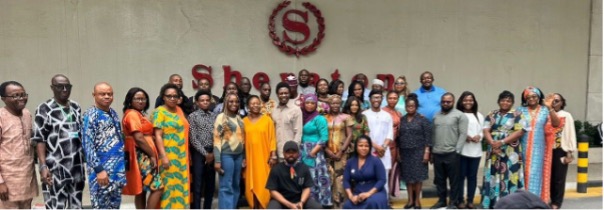August 1, 2024
The media plays a pivotal role in achieving the goal of ending the AIDS epidemic by 2030. By raising awareness, combating stigma, disseminating accurate information, promoting safe practices and advocating for funding and policies, the media can significantly influence public health behaviors and support for HIV/AIDS initiatives.
To harness this potential, media professionals from southern Nigeria gathered in Lagos from July 8th to 12th for a comprehensive training on the country's HIV response. Sponsored by HJF Medical Research International Ltd/Gte with support from PEPFAR through the Walter Reed Army Institute of Research (WRAIR), the training was co-facilitated by Journalists Against AIDS (JAAIDS) and Living Health.
The training aimed to update journalists on Nigeria's HIV response, including progress and challenges, foster a community of media responders for the HIV program, and explore effective communication strategies to address ongoing issues. Topics covered included HIV prevention, new testing innovations such as PrEP and PEP, preventing mother-to-child transmission, and the impact on key populations within Nigeria's HIV response. Additionally, sexual and reproductive health rights were discussed.
To enhance understanding of stigma and discrimination, people living with HIV shared their experiences and provided recommendations for how the media can help combat these issues. Emphasis was placed on ethical reporting to ensure factual accuracy and simplified medical terminologies.
Participants in the training included a diverse group of journalists and media professionals committed to enhancing their understanding of HIV/AIDS and improving their reporting skills. The sessions covered a range of critical topics, including the latest developments in HIV prevention and treatment, strategies for reducing transmission rates, and the importance of addressing the specific needs of key populations such as women, children, and marginalized communities.
One of the key areas of focus was the promotion of pre-exposure prophylaxis (PrEP) and post-exposure prophylaxis (PEP) as effective methods for preventing HIV infection. PrEP, a daily medication for people at high risk of contracting HIV, and PEP, an emergency treatment taken after potential exposure to the virus, represent significant advancements in HIV prevention. The training provided journalists with detailed information on these innovations, equipping them to educate the public about their benefits and availability.
Preventing mother-to-child transmission of HIV was another critical topic. The training highlighted the importance of early testing and treatment for pregnant women living with HIV, as well as the role of the media in raising awareness about these life-saving measures. By informing the public about the availability of testing and treatment options, journalists can help ensure that more women receive the care they need to prevent transmission to their infants.
The training also addressed the challenges faced by key populations. These groups often face heightened stigma and discrimination, which can hinder their access to HIV services. Journalists were encouraged to adopt an inclusive approach in their reporting.
To promote ethical reporting, the training emphasized the importance of accuracy and sensitivity in covering HIV-related issues. Journalists were urged to use clear and simple language when explaining medical terms and to avoid sensationalism that could perpetuate stigma. By providing accurate and respectful coverage, the media can help to normalize conversations about HIV and reduce the fear and misinformation that often surround the epidemic.
The training concluded with the formation of a media community of practice; a network of journalists dedicated to continuing the work initiated during the sessions. This community will serve as a platform for ongoing collaboration, support, and sharing of best practices in HIV reporting. Through their collective efforts, these media professionals will contribute to the broader goal of ending the AIDS epidemic by 2030.
